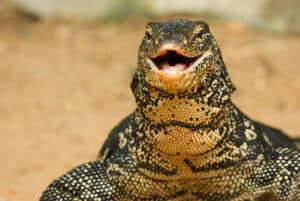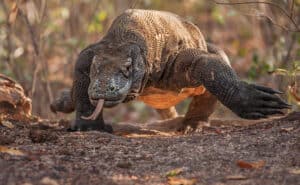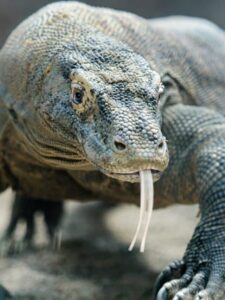Continue reading for our analysis...
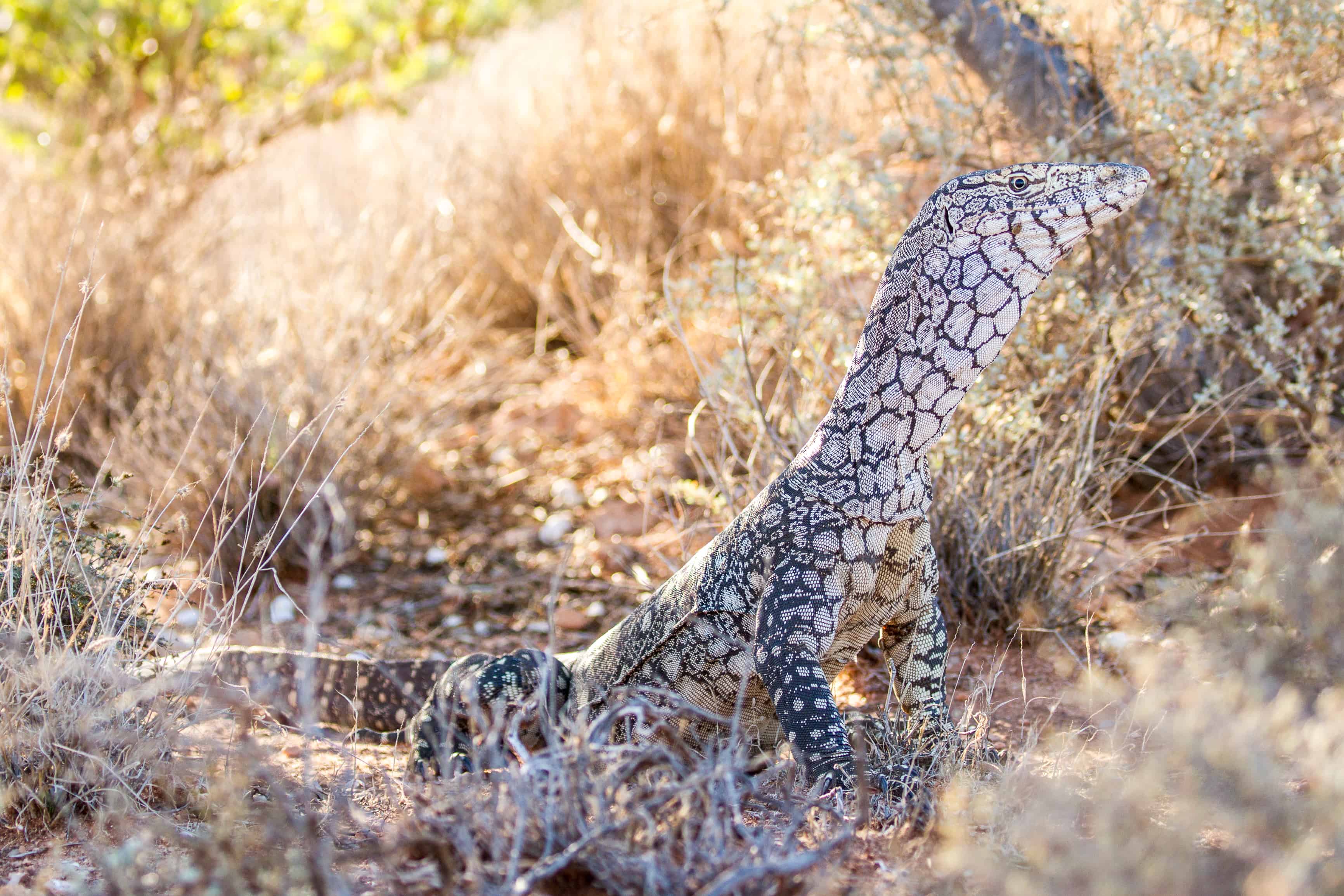
Embark on a follow-along experience through the arid landscape of the desolate outback as you witness the remarkable hunting prowess of the Perentie lizard, the largest monitor lizard in Australia. The incredible video below puts the Perentie’s relentless pursuit of prey in its unforgiving habitat on full display.
The clip below begins with the powerful Perentie lizard gracefully maneuvering through the dry terrain, its keen eyes scanning for any signs of movement. It swiftly seizes a field mouse, but its insatiable hunger lingers, driving it to search for more substantial prey.
Perentie Lizard Hunts Everything Under the Australian Sun!
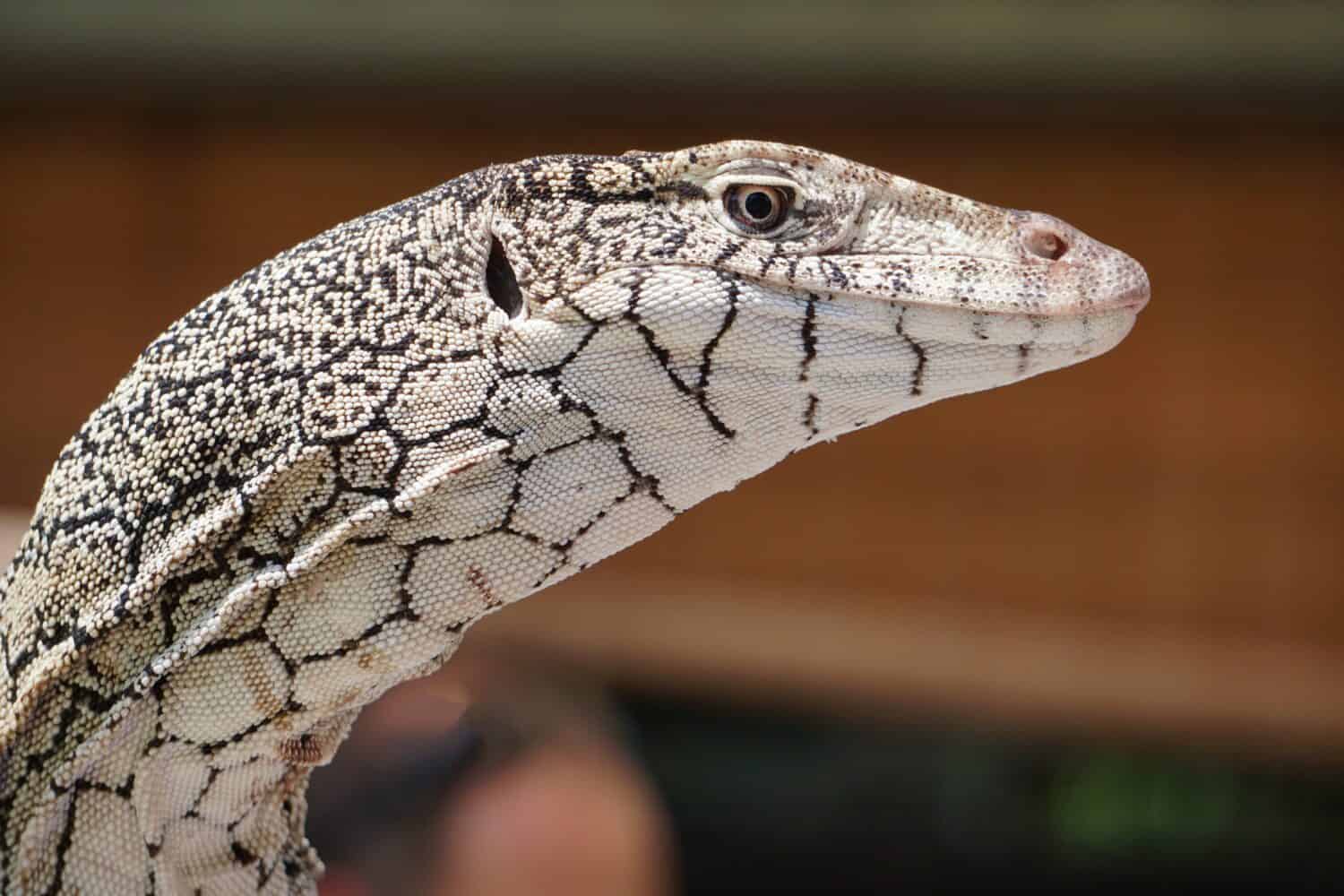
The Perentie Lizard is the largest lizard in Australia, and will attempt to eat anything it can get a hold of!
©K A STUDIO/Shutterstock.com
Meals in the Australian outback can be very hard to come by, and the Perentie isn’t above scavenging a lifeless bird, devouring it whole to satiate its appetite temporarily. His hunger still persists, and the lizard contemplates targeting formidable prey like a wombat or even a dingo—prey that only a reptile of this size would dare to confront.
Undeterred by the challenge, the ambitious Perentie sets its sights on a massive red kangaroo, a creature many times its size. Skillfully stalking its quarry, the Perentie’s pursuit is interrupted by a watchful bird that alerts the kangaroo of the predator’s presence, triggering a thrilling chase. The kangaroo eludes the determined lizard’s grasp, escaping with agility and speed, leaving the Perentie in the dust.
Still with a one-track mind towards his next meal, the Perentie redirects its focus to a venomous Mulga snake, but the Perentie has a secret weapon up his sleeve; a strong resistance to snake venom. With a powerful bite the lizard whips the snake around to subdue the serpent, securing a well-deserved meal and concluding its day of hunting.
The majesty and ferocity of the Perentie lizard which calls the harsh Australian outback home is impossible to argue. The video below shows its formidable hunting skills earn it another day within the unyielding struggle for survival in one of the world’s most challenging environments.
What Makes Monitor Lizards So Special?
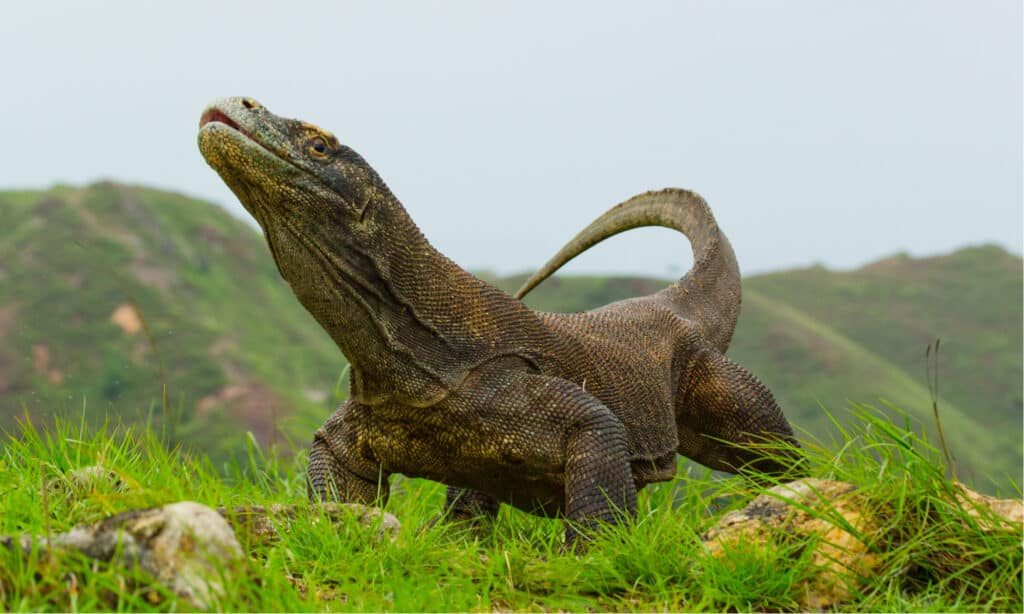
The Komodo Dragon, the largest lizard on earth, does have venom glands, but no syringe-like fangs to deliver it with like their legless cousins!
©GUDKOV ANDREY/Shutterstock.com
Monitor lizards belong to the subfamily Varaninae, a distinct group within the lizard family. These fascinating reptiles possess several unique characteristics that set them apart.
Known for their elongated bodies, powerful limbs, and long tails, monitor lizards exhibit exceptional strength and agility, as the Perentie lizard shows in the wild video below! With their sharp claws and robust jaws, they are skilled predators, capable of hunting a wide range of prey.
Their forked tongues aid in a strong sense of smell, while their ability to breathe using both lungs and their skin allows them to thrive in diverse environments. Monitor lizards are also renowned for their intelligence and problem-solving abilities, making them highly adaptable to their surroundings.
Though the Perentie Lizard visible in the video below is the largest in Australia, the Komodo Dragon reigns as the largest monitor lizard, or any lizard for that matter, in the world! Their remarkable traits and adaptations make them a naturally intriguing subgroup within the diverse world of reptiles.
Are Monitor Lizards Venomous?
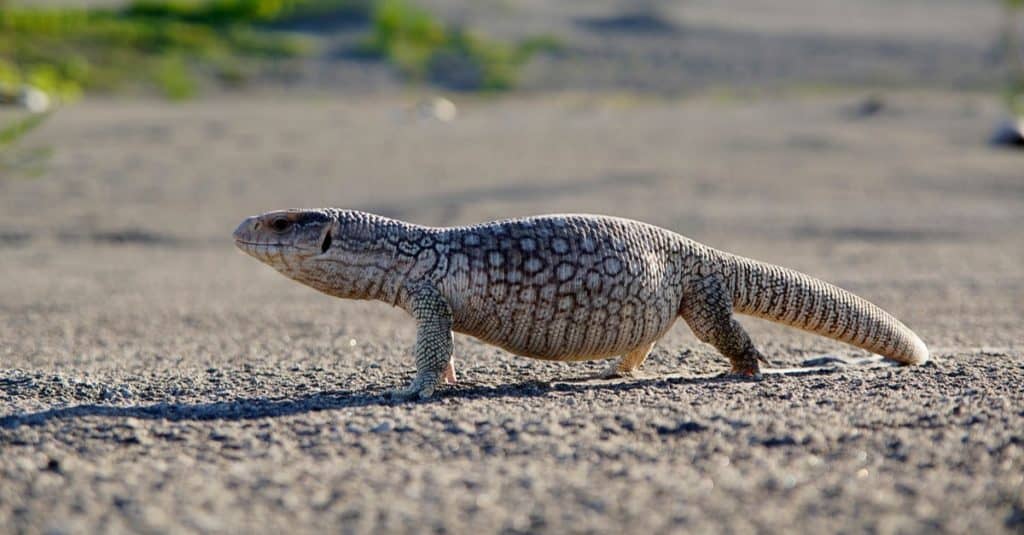
Savannah monitors are large lizards!
©Fuadi Afif/Shutterstock.com
To any hopeful lizard pet owners out there, don’t worry, not all monitor lizards are venomous. In fact, the majority of monitor lizard species boast no venom at all. Even for the monitor lizard species which do possess venom, such as the Komodo dragon, which possesses venom glands, their venom is not typically used for hunting or subduing prey. Instead, it is believed that the venom of these species serves a role in fighting bacteria and aiding in the digestion of prey.
However, it is important to note that most monitor lizards, including well-known species like the Nile monitor, Savannah monitor, and the Perentie Monitor starring in the video below, do not possess any venom glands. In any case, as is with all wildlife, it is always advisable to exercise caution and respect when encountering monitor lizards, as these powerful reptiles can still cause serious harm.
Is it Normal Behavior for Monitor Lizard to Eat Kangaroos?
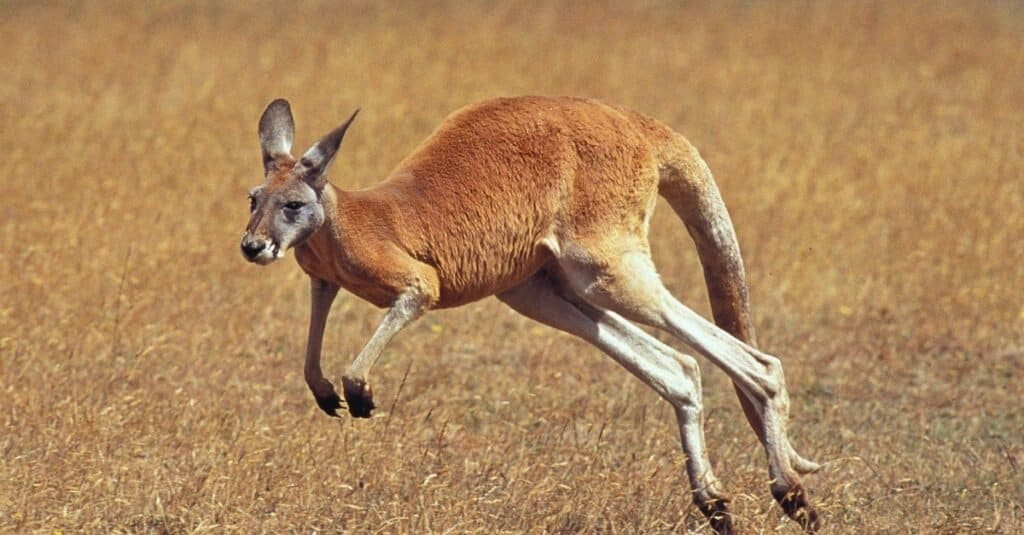
Kangaroos can be taken down by a monitor lizard, but it is not common prey for them.
©iStock.com/slowmotiongli
The short answer here is yes, but there’s a but. Monitor Lizards have a versatile diet, consuming a wide range of meat from scavenged carcasses to animals they hunt. Their prey varies from small rodents to large water buffalo.
However, if given the opportunity to hunt a kangaroo, they will. It’s also normal for them to eat whatever they can when they can. They are primarily carnivorous, feasting on eggs, smaller reptiles, fish, birds, insects, and small mammals.
However, depending on their habitat, some monitor species also consume fruit and vegetation.
Thank you for reading! Have some feedback for us? Contact the AZ Animals editorial team.



